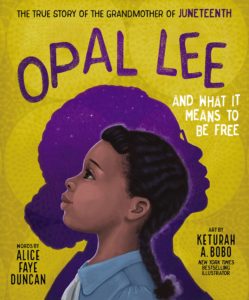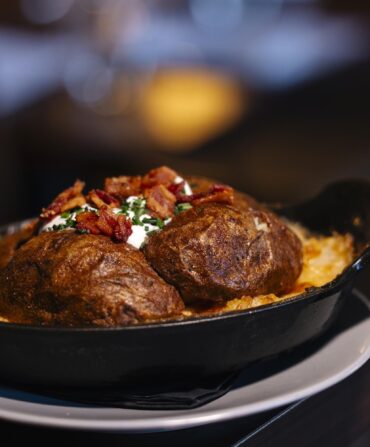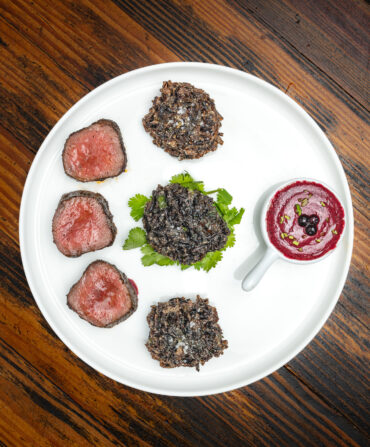
Red punch, songs, and jubilation have been part of children’s book author Alice Faye Duncan’s Juneteenth celebration for decades. But it wasn’t until the spring of 2020 that she learned of Opal Lee, the trailblazing Texas native who, in 2016 at age 89, walked from Fort Worth to Washington, D.C., covering two and a half miles a day to acknowledge the two and a half years it took for the Emancipation Proclamation to be recognized in Texas. Last year, on June 17, Lee’s years of marching and petitioning paid off when President Joe Biden signed Senate Bill S. 475, declaring Juneteenth a federal holiday. “Since the late seventies and the early eighties, Juneteenth has been recognized by the state of Texas as a holiday, but it had not been recognized nationally,” says Duncan, a longtime writer, teacher, and librarian who lives in Memphis. In 2020, as racial tensions flared after the tragic death of George Floyd, Lee pleaded for national unity, and her message about Juneteenth gained national attention—and the attention of Duncan. Her children’s book, Opal Lee and What It Means To Be Free: The True Story of the Grandmother of Juneteenth, was published earlier this year. We spoke to Duncan about what Juneteenth means to her, how she translated Lee’s story for children, and what kids can learn from Lee’s perseverance and unfettered joy.
What was your inspiration for creating a children’s book about Opal Lee?
I was unaware of Grandmother Opal Lee until the summer of 2020. In the middle of the George Floyd tragedy, her voice rose above the fires and fanned the spirit of peace under the banner of Juneteenth. She used the holiday to encourage all Americans to unite and come together. She was born in Marshall, Texas, and she had been working towards making Juneteenth a national holiday since the late seventies. And she was still holding up this banner. The story caught the attention of the nation and an editor at Harper Collins who was familiar with my earlier work for children. She and her team approached me to work on a book about Opal Lee.
What an honor. Did you immediately say yes?
Well, here’s the thing: I was not familiar with Opal Lee until 2020, right? I had been studying and writing about the civil rights movement since 1993, so I had an entire body of background information on that. I also lived in Memphis, so I knew about many of the civil rights movement’s historical figures in my city. But when it comes to Juneteenth, there was some trepidation there at first because my background knowledge was not as solid as it was on civil rights. And tackling the history of slavery for small kids is a very tall order. I was like, can I do this? And the more I sat with it and the more I read about Opal Lee and her spirit of infectious joy, I thought that this is a challenge that I’m up for.
How much communication did you have with Opal Lee and her family?
I called and not only interviewed Opal but also her friends and family, including her granddaughter who now works as her assistant. I discovered that her mother came from a family of like nineteen or twenty brothers and sisters. And that family, since the 1940s, has been documenting their ancestry. Having that kind of information and all of those primary sources—pictures of her mom, pictures of her mom’s siblings, pictures of her granddad who was a preacher in Texas—all of it was just so stirring. It bubbled over in my soul. I hope that’s translated ultimately in the book.
In all that research was there anything especially surprising?
Yes. I learned that red foods and desserts like barbecue and strawberry shortcake are important to every Juneteenth celebration. And here’s the reason why: Vibrant foods represent the delicacies Black Americans were denied during their servitude. And it turns out Big Red soda, which is bottled in Waco, Texas, is the most popular soda served at Texas Juneteenth celebrations. I’d drank it as a child but never knew it had cultural importance to the Juneteenth holiday.
Do you have a favorite moment or a line in the book?
Absolutely. There’s a phrase in there where Opal Lee says, “Freedom, hope, and joy divine. Juneteenth means it’s freedom time.”
That is so lyrical. When I was reading the book with my young children it was almost impossible not to sing that line.
When I’m writing, I’m trying to find some internal rhythm that matches the mood and the tone of the story. And so if you read Opal Lee, particularly if you are from the South and you come from a Southern religious tradition, I hope you catch that call and response element that I’m trying to create in the book.
In the book Opal Lee says, “Freedom is a gold coin. Struggle makes it shine.” Was it difficult to talk about the struggle when writing for children?
What I picked up in talking to Grandmother Opal Lee is that she has an infectious, joyful spirit. And at the age of 96, she’s still quick-witted and spunky, and her love for children is palpable. In the book, you learn that her family suffered a terrorizing fire on Juneteenth 1939. She survived that blaze believing in the possibility of racial reconciliation. I don’t oversimplify her trials, however I do capture her faith in the future, and most of the book is a joyful call for unity. Yes, there’s a divide here, but those of us who have the courage to cross that divide can create a bridge and not a wall.
What’s one thing you hope children learn from the book?
I pray the message in Opal Lee’s life is very clear. Juneteenth means unity, hope, joy, and liberty. So, I hope children, as they picnic and feast on barbecue, red fruit punch, and strawberry cake, I truly hope that they will be inspired to make new friends beyond their own neighborhood.
How are you going celebrate Juneteenth this year?
I live in Memphis, and we’ve been celebrating Juneteenth here since 1993. So, I’m going to go to Douglass Park and do a story time. We’ll read and sing songs in the kids’ corner.
And maybe some red soda for you?
Oh, not maybe‚ honey—absolutely.









